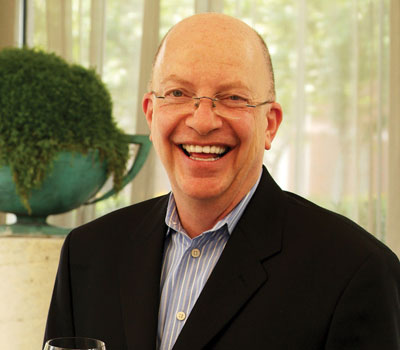Jim Mullen was a fixture in the NYC wine scene for 16 years, 14.5 of those as manager of the Burgundy haven Montrachet in NYC. After a stint running Morrell Wine Bar, he moved across the Hudson to The Frog and the Peach, a chic dining room in New Brunswick, New Jersey, that’s been one of the state’s favorite restaurants since it opened in 1983. His list—deep in the classics and well priced, liberally embellished with notes, maps and photos—is ever-evolving, this year picking up on the Beaujolais trend and finding more room for Spanish imports.


You remarked that you find it interesting how, every year, your perceptions fail to mirror the actual numbers you run. How so?
Well, it’s not that Sancerre is at the top of the list; that’s not surprising. But the next wine, the Maison L’Envoyé Two Messengers Pinot Noir: that was surprising, that we sold so much. It’s great wine, and I’ve known Mark Tarlov, who started winery—he’s an old friend from the Montrachet days-—so when we brought it on we did a promo with the staff—but that was early in the year. What surprised me was that it kept up the momentum all year long. I don’t think people know the name and story; it’s more that people are still looking for pinot noir, and we have a lot of Willamette wines.
The Terres Dorées Beaujolais L’Ancien was your biggest new success this year. Is Beaujolais picking up attention?
Burgundy has gotten so expensive; there are lot of wonderful less expensive from Bourgogne Rouge from Marsannay or Poussin, but these are quiet wines; they take a little time to appreciate. You come to like a bottle over the course of sitting down to a meal before you come to love it; it doesn’t have immediate impact. And those types of wines don’t always do well in a restaurant setting. Beaujolais has more to offer at once, and there’s so much better-quality Beaujolais on the market now, too. I’ve always loved Beaujolais but for a long time I just couldn’t sell it by the bottle or by the glass. Earlier this year, kind of out of frustration at my inability to find inexpensive, affordable wines from the Côte d’Or, I decided I’m going to just put Beaujolais in with the rest of Burgundy, and let it compete with whatever else is there. And it did well. Château Moulin a-Vent—that’s the one that really got me going. It’s on the list $65 to $70—right at our sweet spot—and it delivers.
There’s not much California wine on your list of top-selling wines.
You know, bottles that I would buy for $25 are now $40, and while many people are still willing to pay it, in general, I think the winemakers are creating problems for themselves. But it has opened up an opportunity for many other sorts of wines; it opened up big opportunity for Spain in particular, in that these are wines grown in the sunshine and warmth, and they have that immediate wallop—Ribera del Duero, some of the Rioja. Also, Priorat—the Pouig from JM Fuentes has done really well and it’s affordable.
Any surprising stand outs?
One thing that really stood out this year is prosecco. We have this really wonderful one: Alice Rosé, made partially with the marzemino grape; we’re selling tons of it. That alone has raised our sparking percentage. At least here, prosecco is the malbec of sparkling wines. But the staff all love this wine, it’s just so pleasant. People tend to drink a couple of glasses, so they are taking it into the meal.
It’s rare to find picpoul on a best-sellers list.
I visited there and really loved it—that’s just a great value wine. We sell a load of [the Vignerons de Florensac Picpoul de Pinet]. It’s delicious, and we do a lot of shellfish and picpoul is great with it; it grows right there next to these huge oyster beds. This one is from a cooperative. We pay like $6.60; it’s on the list by the glass at $9.
Last year you were pouring loads of Sherry.
Sherry is slowing down; I was emphasizing it a lot for a couple for years but moved on. Right now, we’ve just started a five-course winter tasting menu that’s all paired with Sherries. It works well: the wines are so good, the staff gets into it and people get excited. But Sherry is so complicated; your normal guest isn’t going to have wherewithal to follow up with it on their own. Just making sure that the staff knows what’s going on is a challenge.
is W&S’s editor at large and covers the wines of the Mediterranean and Central and Eastern Europe for the magazine.
















